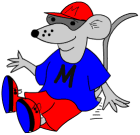zero, one, two, three, four, five, six, seven, eight, nine, ten
The following pages give some practice at reading and writing these words. Use the light grey letters to trace over and the lines to control the size of the letters.
This is the first of a series looking at the words and phrases that children will be expected to understand and use by the end of their Reception Year. (According to the Primary Framework for Mathematics.)
We start by looking at numbers to ten.
zero, one, two, three, four, five, six, seven, eight, nine, ten
The following pages give some practice at reading and writing these words. Use the light grey letters to trace over and the lines to control the size of the letters. Continue reading “Reception vocabulary: Read and write numbers to 10”
 The questions on this page all relate to counting on to the next whole ten. To begin with children will start at the number and count on in ones (often using fingers to help). As confidence grows they might notice that to count on 5 from a 2-digit number with 5 in the units will always take them to the next whole ten.
The questions on this page all relate to counting on to the next whole ten. To begin with children will start at the number and count on in ones (often using fingers to help). As confidence grows they might notice that to count on 5 from a 2-digit number with 5 in the units will always take them to the next whole ten. This is the first in my series of ‘Booster’ worksheets for year 6 children who are about to take the SAT tests. They aim to boost a child’s score in the test papers by making them familiar with the types of questions that they will come across.
This is the first in my series of ‘Booster’ worksheets for year 6 children who are about to take the SAT tests. They aim to boost a child’s score in the test papers by making them familiar with the types of questions that they will come across.  Looking at my stats I can see that everyone is very busy with shopping, eating, drinking etc so will join you all and have a week off. I will leave you with a little puzzle in case you have nothing better to do!
Looking at my stats I can see that everyone is very busy with shopping, eating, drinking etc so will join you all and have a week off. I will leave you with a little puzzle in case you have nothing better to do!